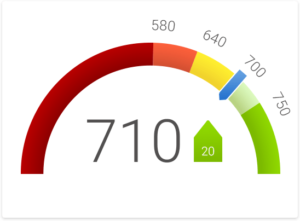 Today’s top story: What really happens if you don’t pay your taxes by April 17th. Also in the news: Getting tax audit help might be easier than you think, are you the right person for a do-it-yourself house kit, and 6 great TV episodes to watch after paying your taxes.
Today’s top story: What really happens if you don’t pay your taxes by April 17th. Also in the news: Getting tax audit help might be easier than you think, are you the right person for a do-it-yourself house kit, and 6 great TV episodes to watch after paying your taxes.
What Really Happens If You Don’t Pay Your Taxes by April 17
Cue the penalties.
Getting Tax Audit Help Might Be Easier Than You Think
Your tax software can help.
Are You Built for a Do-It-Yourself House Kit?
Do you have what it takes?
6 Great TV Episodes to Watch After Paying Your Taxes
Join The Honeymooners, Archie Bunker and Homer.
 Today’s top story: How bad credit can increase your car costs. Also in the news: Owning Bitcoin creates a complex tax situation, 13 last-ditch ways to avoid the poorhouse in retirement, and the top 7 tax deductions and credits people forget.
Today’s top story: How bad credit can increase your car costs. Also in the news: Owning Bitcoin creates a complex tax situation, 13 last-ditch ways to avoid the poorhouse in retirement, and the top 7 tax deductions and credits people forget. Today’s top story: Seeking smart, funny – and a credit score above 700. Also in the news: Wellness travel helps you tune up or tune out, what you need to know about investing in IPOs, and a major tax mistake to avoid if you have student loans.
Today’s top story: Seeking smart, funny – and a credit score above 700. Also in the news: Wellness travel helps you tune up or tune out, what you need to know about investing in IPOs, and a major tax mistake to avoid if you have student loans.  Today’s top story: How your money story can help you break free. Also in the news: Why you should freeze your child’s credit, 4 things that could make you a target for a tax audit, and what happens if you don’t pay a debt.
Today’s top story: How your money story can help you break free. Also in the news: Why you should freeze your child’s credit, 4 things that could make you a target for a tax audit, and what happens if you don’t pay a debt. Today’s top story: The IRS isn’t having any of these reasons not to pay taxes. Also in the news: What to buy (and skip) in April, how to shop for used clothes – and why you should, and 4 ways to use your health savings accounts to boost your bottom line.
Today’s top story: The IRS isn’t having any of these reasons not to pay taxes. Also in the news: What to buy (and skip) in April, how to shop for used clothes – and why you should, and 4 ways to use your health savings accounts to boost your bottom line.  Today’s top story: Don’t let technology bully you into tipping. Also in the news: 4 things that could make you the target of an audit, how lending a hand by co-signing a loan can backfire, and 7 smart ways to spend a $1,000 tax refund.
Today’s top story: Don’t let technology bully you into tipping. Also in the news: 4 things that could make you the target of an audit, how lending a hand by co-signing a loan can backfire, and 7 smart ways to spend a $1,000 tax refund.